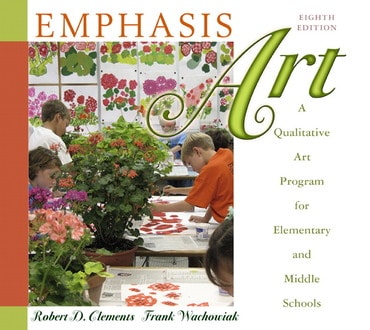Switch content of the page by the Role togglethe content would be changed according to the role

Emphasis Art: A Qualitative Art Program for Elementary and Middle Schools, 9th edition
Published by Pearson (March 13, 2009) © 2010
- Robert D. Clements Emeritus, University of Georgia
- Frank D. Wachowiak
Hardcover
$170.66
Price Reduced From: $213.32
ISBN-13: 9780137145829
Emphasis Art: A Qualitative Art Program for Elementary and Middle Schools
Published 2009
Need help? Get in touch